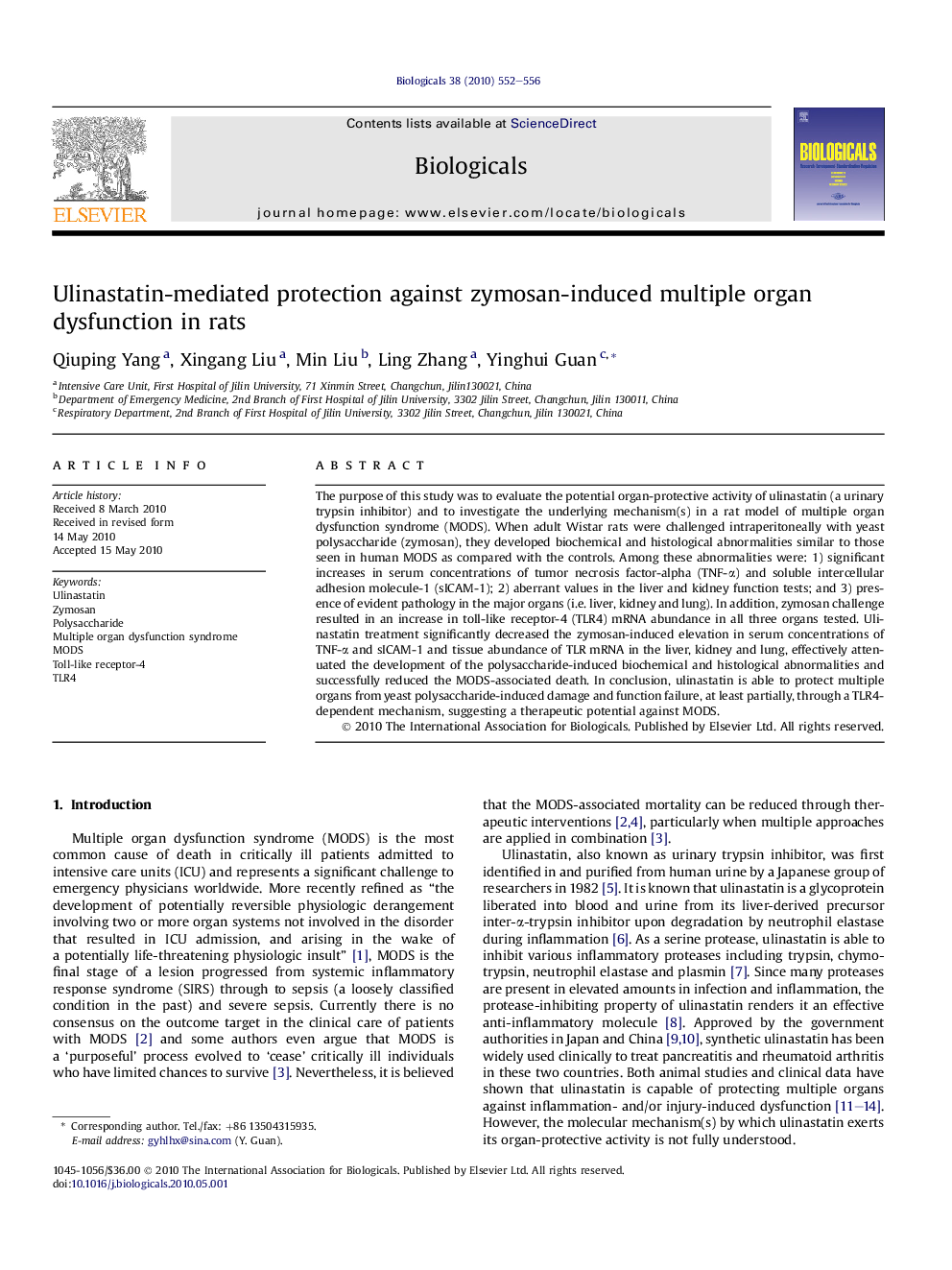| Article ID | Journal | Published Year | Pages | File Type |
|---|---|---|---|---|
| 2034167 | Biologicals | 2010 | 5 Pages |
Abstract
The purpose of this study was to evaluate the potential organ-protective activity of ulinastatin (a urinary trypsin inhibitor) and to investigate the underlying mechanism(s) in a rat model of multiple organ dysfunction syndrome (MODS). When adult Wistar rats were challenged intraperitoneally with yeast polysaccharide (zymosan), they developed biochemical and histological abnormalities similar to those seen in human MODS as compared with the controls. Among these abnormalities were: 1) significant increases in serum concentrations of tumor necrosis factor-alpha (TNF-α) and soluble intercellular adhesion molecule-1 (sICAM-1); 2) aberrant values in the liver and kidney function tests; and 3) presence of evident pathology in the major organs (i.e. liver, kidney and lung). In addition, zymosan challenge resulted in an increase in toll-like receptor-4 (TLR4) mRNA abundance in all three organs tested. Ulinastatin treatment significantly decreased the zymosan-induced elevation in serum concentrations of TNF-α and sICAM-1 and tissue abundance of TLR mRNA in the liver, kidney and lung, effectively attenuated the development of the polysaccharide-induced biochemical and histological abnormalities and successfully reduced the MODS-associated death. In conclusion, ulinastatin is able to protect multiple organs from yeast polysaccharide-induced damage and function failure, at least partially, through a TLR4-dependent mechanism, suggesting a therapeutic potential against MODS.
Keywords
Related Topics
Life Sciences
Biochemistry, Genetics and Molecular Biology
Biochemistry, Genetics and Molecular Biology (General)
Authors
Qiuping Yang, Xingang Liu, Min Liu, Ling Zhang, Yinghui Guan,
